In the modern world of climate change, hearing about the cumulating consequences of human activity, increasing natural disasters, and the deterioration of ecosystems around the world is becoming daily news. Amongst these headlines are reports of declining animal populations and unfortunately, extinction events. This article will explore 5 animal species that recently became extinct and discuss what factors contributed to that fate. Here are 5 endangered animals recently declared extinct.
Background
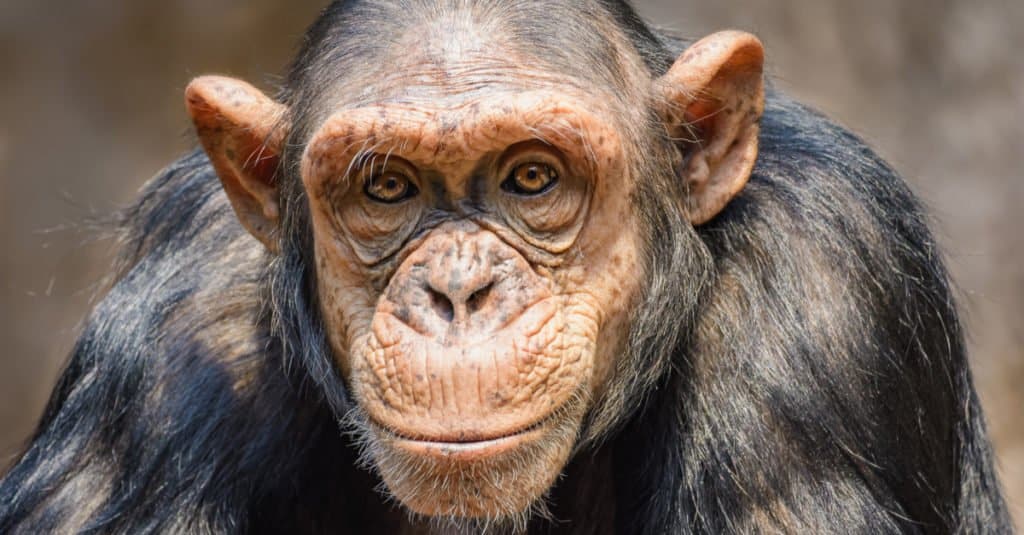
Chimpanzees are an example of an endangered animal species.
©Thorsten Spoerlein/Shutterstock.com
The conservation status of animals reflect the level of threat they face in the wild and the urgency of conservation efforts necessary to ensure their survival. These statuses serve as indicators of the population trends, distribution, and overall health of a species. The International Union for Conservation of Nature (IUCN) Red List is the most comprehensive global system for assessing the conservation status of species. The Red List categorizes animals as “Extinct” (EX) for species that have no reasonable doubt of extinction, “Extinct in the Wild” (EW) for species surviving only in captivity, and “Critically Endangered” (CR) for species facing an extremely high risk of extinction soon. Species can also be “Endangered” (EN), “Vulnerable” (VU), “Near Threatened” (NT), or “Least Concern” (LC).
Assessing the conservation status of animals involves gathering data on various factors, including population size, geographic range, reproductive rates, and threats they face. Experts and scientists evaluate this information to determine the appropriate Red List category for a particular species. The assessment process is rigorous and requires ongoing monitoring and research. This process helps to prioritize conservation efforts, raise awareness, and guide policy decisions to prevent further extinctions and promote the recovery of endangered species.

The
woolly mammoth
is a famous example of an extinct animal. The species went extinct 4,000 years ago.
The term “extinct” refers to a species that no longer exists in the wild or anywhere else on Earth. It means that there are no known living individuals of that species, and it represents the ultimate loss of a unique evolutionary lineage.
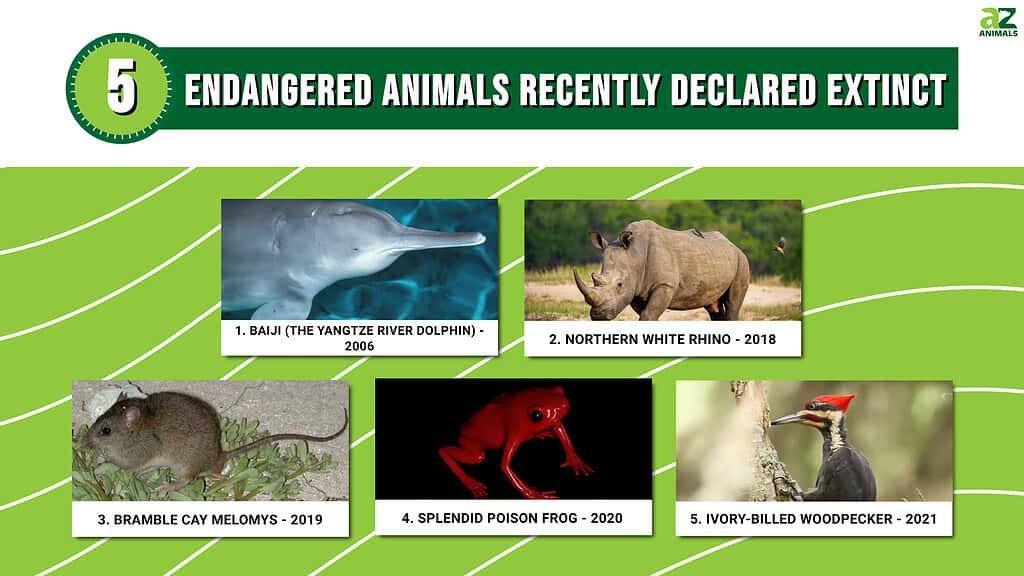
1. Baiji (The Yangtze River Dolphin) – 2006

The Baiji was the first extinction of a dolphin species in modern times.
©Roland Seitre / CC BY-SA 3.0 – License
The Baiji, also known as the Yangtze River dolphin or Chinese River dolphin, was a freshwater dolphin species that once inhabited the Yangtze River in China. It was famous for its elegant appearance and unique characteristics. The Baiji had a long, slender body, measuring up to 2.5 to 2.7 meters in length, and a distinct, slightly upturned beak. Its skin was bluish-gray on the back, fading to white on the belly. With a small, rounded dorsal fin and a fluke tail, it was well adapted to life in the river, relying on echolocation to navigate and find prey.
The Baiji was functionally extinct in 2006, making it the first dolphin species driven to extinction due to human activity. The exact date of its extinction remains uncertain, but no confirmed sightings have been reported since 2002. Their extinction was declared in 2006 following the failure of the Yangtze Freshwater Dolphin Expedition to detect any remaining animals during an extensive survey project. The IUCN, however, still lists the Baiji as critically endangered despite no sightings or scientific documentation of their presence in recent years.

This depiction of the Yangtze River portrays the habitat where the Baiji once thrived.
©iStock.com/martinhosmart
The main factors contributing to the decline and eventual extinction of the Baiji were habitat degradation, entanglement in fishing gear, and pollution. Industrialization, dam construction, and increased shipping traffic in the Yangtze River resulted in significant loss and fragmentation of its habitat. Overfishing and the use of gillnets further impacted this dolphin’s population, leading to its disappearance. The loss of the Baiji highlights the urgent need for conservation efforts and sustainable management of freshwater ecosystems to prevent the extinction of other endangered species.
2. Northern White Rhino- 2018
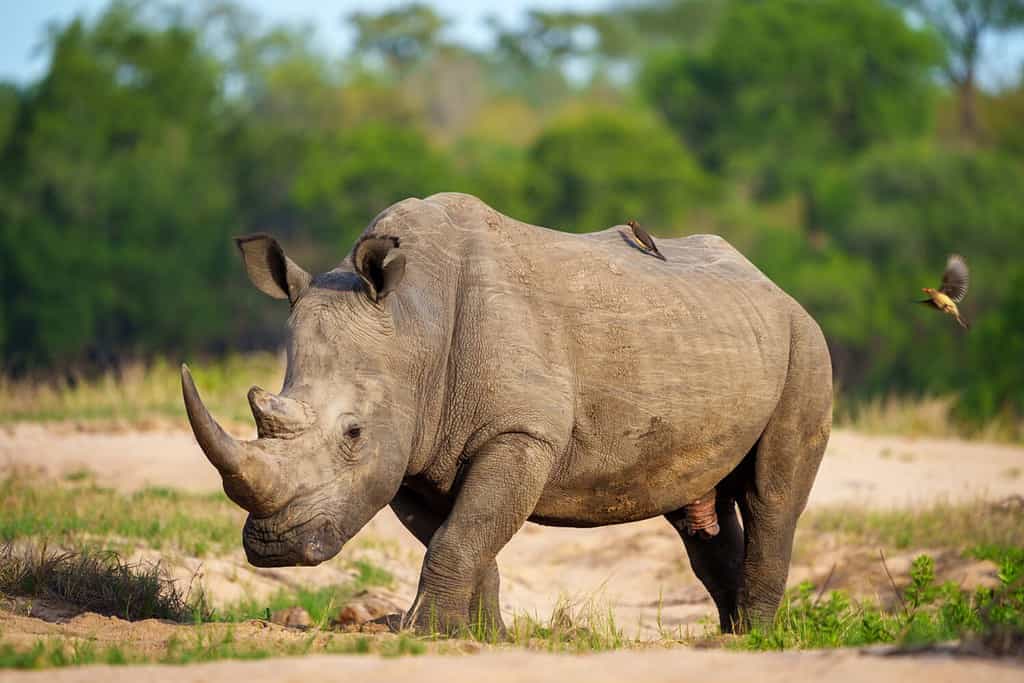
Northern white rhinos, like other rhinos,
elephants
, and several more species, are negatively impacted by poaching. Poachers hunt these animals for their precious horns and tusks.
©Roger de la Harpe/Shutterstock.com
The northern white rhino, a magnificent and imposing creature, was one of the two subspecies of white rhinoceros. It had immense size, with males weighing up to 5,500 pounds. The animals had two large horns on their snouts, the foremost being longer and averaging around 3 feet in length. The northern white rhino had a broad mouth for grazing on grasses and a grayish-brown skin, which acted as a protective shield against the elements. This subspecies once roamed across parts of Central and East Africa, primarily inhabiting regions such as Sudan, Uganda, the Democratic Republic of the Congo, and the Central African Republic.
Regrettably, the northern white rhino is now functionally extinct in the wild. The last known surviving male, named Sudan, died in 2018, leaving behind only two surviving females, Najin and Fatu. Efforts to save the subspecies from extinction are underway through assisted reproduction techniques and genetic preservation. The decline of the northern white rhino is due to various factors, including habitat loss due to agriculture and human encroachment, as well as poaching for their valuable horns. The demand for rhino horns, primarily driven by illegal trade in Asia, has decimated populations and pushed the species to the brink of extinction. Despite these challenges, conservation organizations and scientists continue their dedicated work to potentially revive the northern white rhino through advanced reproductive technologies and safeguarding genetic material.
3. Bramble Cay Melomys – 2019
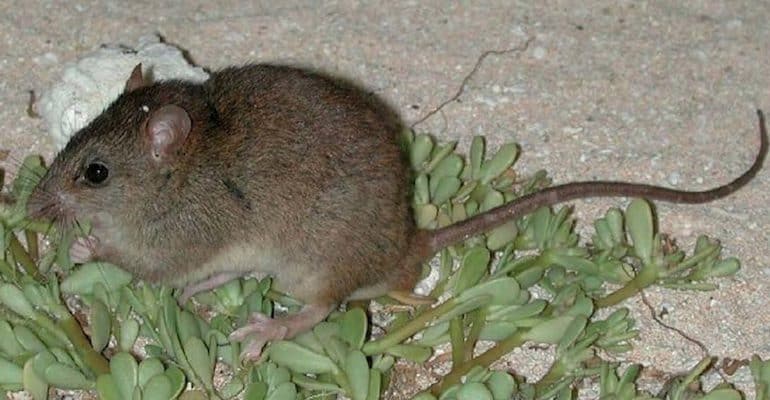
The Bramble Cay melomys was endemic to Bramble Cay, a coral cay in Australia.
©State of Queensland // CC 3.0 – License
The Bramble Cay melomys, also known as the Bramble Cay mosaic-tailed rat, is a small rodent species that inhabited Bramble Cay, a tiny coral cay in the eastern Torres Strait of Queensland, Australia. This species was endemic to Bramble Cay, which means it was found nowhere else in the world. Physically, the Bramble Cay melomys had a distinct appearance. It was about the size of a mouse, with a slender body and a long, thin tail. Its fur was gray-brown on the back and pale underneath. It had large, rounded ears and black, protruding eyes. As an excellent climber and swimmer, it was well adapted to its island habitat, consisting of low-lying vegetation and mangroves.
Unfortunately, the Bramble Cay melomys is now extinct. The last confirmed sighting of this species occurred in 2009, and subsequent surveys failed to find any individuals. The Australian government’s Department of the Environment and Energy formally declared the rodent extinct in February of 2019. The decline and eventual extinction of the Bramble Cay melomys were primarily because of habitat loss and degradation. The causes of this were rising sea levels, storm surges, and coastal erosion. Bramble Cay, a low-lying island, faced severe impacts from climate change and the loss of vegetation crucial for the survival of the species. The extinction of the Bramble Cay melomys serves as a stark reminder of the vulnerability of island species to environmental changes. It also highlights the urgent need for conservation efforts to protect and preserve unique and threatened ecosystems.
4. Splendid Poison Frog – 2020

The splendid poison frog is one of several frog species that have met their demise due to the chytrid fungus.
©Agustin Herrera C/Shutterstock.com
The splendid poison frog was a vibrant and captivating creature found in the rainforests of Panama and Colombia. This amphibian had stunning coloration, which varied among individuals and populations. It typically displayed a bright red or orange body with contrasting black or dark blue patches. This coloration served as a warning to potential predators about its toxicity, as the species contained potent neurotoxins in its skin. The splendid poison frog’s distribution was primarily limited to specific regions within Panama and Colombia. It was prevalent specifically in the Darién region of Panama and the Chocó region of Colombia. These areas provided the frog with the necessary habitat, including dense leaf litter, moist forest floors, and small bodies of water, such as streams or pools, for breeding.
The splendid poison frog became extinct in 2020. This is in large part due to the chytrid fungus. Scientists believe that many declining and recently extinct frog species are susceptible to a disease called chytridiomycosis. This disease spreads when the chytrid fungus attacks the frogs’ skin. The disease causes deterioration of the skin and, because frogs use their skin to breathe, it can inhibit respiration. It also disrupts a frog’s ability to regulate its water and electrolyte balance which can lead to a heart attack.
5. Ivory-Billed Woodpecker – 2021
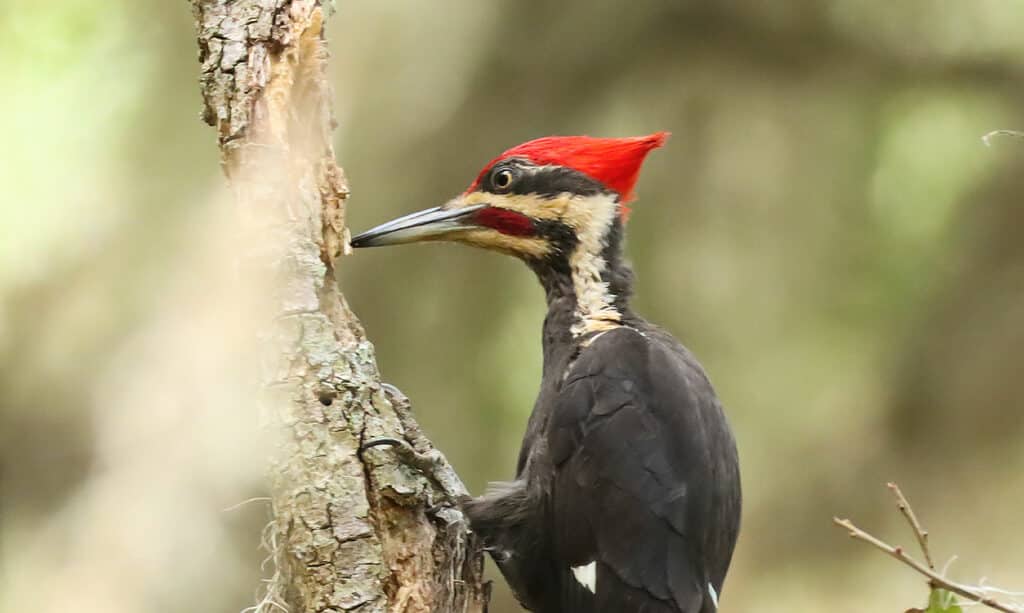
Ivory-billed woodpeckers were once prevalent in the United States of America.
©iStock.com/Wirestock
The ivory-billed woodpecker was a striking and majestic bird. In fact, it was one of the largest woodpecker species in the world. It possessed a distinctive appearance with a black body, white wing patches, and a prominent crest on its head. The male ivory-billed woodpecker had a vivid red crest, while the female had a black crest. Its bill was long, sturdy, and ivory in color, hence the name “ivory-billed.” This magnificent bird was once found in the southeastern United States. It was particularly seen in the bottomland hardwood forests stretching from Texas to Florida and up to the Carolinas.
The last confirmed sighting of this woodpecker was in the 1940s and in 2021, the United States Fish and Wildlife Service declared the species extinct. The decline and eventual extinction of the ivory-billed woodpecker were primarily due to habitat loss. Intense logging and deforestation activities in the late 19th and early 20th centuries greatly reduced the vast tracts of old-growth forests that the species depended on for nesting and foraging. Fragmentation and destruction of its habitat disrupted its breeding patterns and food sources, contributing to its decline. Other factors, such as hunting for feathers and egg collection, may have also played a role.
How You Can Help

Solar power is one form of renewable energy.
©Fly_and_Dive/Shutterstock.com
Individuals can play a crucial role in addressing climate change and protecting endangered animals. Firstly, adopting sustainable lifestyle choices such as reducing energy consumption, embracing renewable energy sources, and minimizing waste can significantly reduce carbon footprints. Supporting conservation organizations and participating in local initiatives can help protect and restore habitats crucial for endangered species, as well. Additionally, spreading awareness through education, social media, and community engagement raises consciousness about climate change and the importance of biodiversity. Lastly, advocating for policy changes and supporting environmentally conscious businesses can create a collective impact in mitigating climate change and preserving endangered animals for future generations.
The photo featured at the top of this post is © Chris Twine/Shutterstock.com
Thank you for reading! Have some feedback for us? Contact the AZ Animals editorial team.






